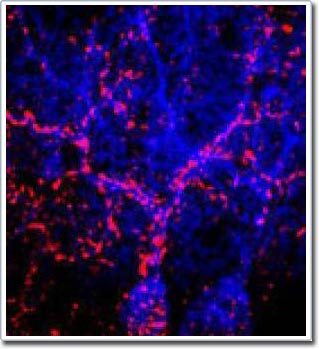Brain damage and brain function can recover
Scientists from Laboratoire de Neurobiologie des Processus Adaptatifs (CNRS / Université Pierre et Marie Curie) have shown that traumatic brain can be restored by creating a small amount of newly attached nerve endings body, rather than creating a large number of unclear connections. Behavioral tests have demonstrated that this nerve regeneration can also restore damaged brain functions.
Brain injury in adults can cause cognitive and physical damage for a long time and cannot be cured. However, the motor and space functions can be restored if injured neurons are stimulated to create new nerves. These neural circuits develop naturally after brain injury in young children.
Previous researchers have demonstrated that - based on trauma to the neural axis connected to the stalk of the cerebellum (1) - nerve regeneration in young adults similar to those observed in Infant. Recovery can be achieved by treating damaged cerebellum with a peptide (2) called a brain-derived neurotransmitter (BDNF), which plays a role in effective development and operation. of this nerve direction.
In the present case, the scientists have expanded the model and pointed out the heads of nerve axons interacting with the unaffected nerve cell network to restore previous functions; for example, synchronizing movement and spatial orientation. This result demonstrates the correlation between improved behavior and regeneration of the nervous system in the cerebellum. Therefore, a small amount of correctly connected nerves are still able to recover some delicate functions such as neuronal or cognitive activity.
These results open up a promising new perspective and allow us to use BDNF - used in medical experiments on how to treat neurodegenerative conditions such as Parkinson's disease - to restore the brain. people after injury.

The new neural circuit (red) communicates with Purkinje cells (green) to allow rehabilitation (Photo: Dixon Kirsty)
Note:
1) Neurological direction means cerebellar fiber direction to Purkinje cells and is associated with motor coordination.
2) A protein often found in the brain involved in brain development and activity.
Reference: Melina L. Willson, Catriona McElnea, Jean Mariani, Ann M. Lohof, and Rachel M. Sherrard.BDNF increases the regeneration of the homotypic olivocerebellar nervous system and is associated with neuronal and cognitive mobility.Brain Magazine April 1, 2008.
- Brain damage: Can recover and integrate into the community
- Paralysis due to spinal injury can still recover itself
- Women's brains recover faster than men
- What is brain death?
- Recovering damage caused by multiple sclerosis
- Miracle: Dead 4-hour pig brain is revived
- America developed chips implanted in human brains
- Wearing tight ties can reduce brain function
- The brain is most active at age 50
- Lack of vitamin E can cause brain damage
- Video: Human brain size compared to other animals
- Finding new ways to treat brain damage
 Green tea cleans teeth better than mouthwash?
Green tea cleans teeth better than mouthwash? Death kiss: This is why you should not let anyone kiss your baby's lips
Death kiss: This is why you should not let anyone kiss your baby's lips What is salmonellosis?
What is salmonellosis? Caution should be exercised when using aloe vera through eating and drinking
Caution should be exercised when using aloe vera through eating and drinking